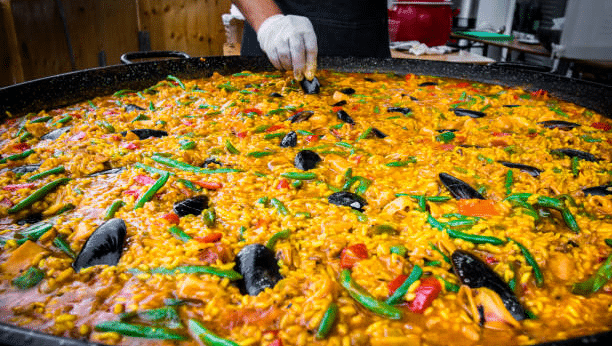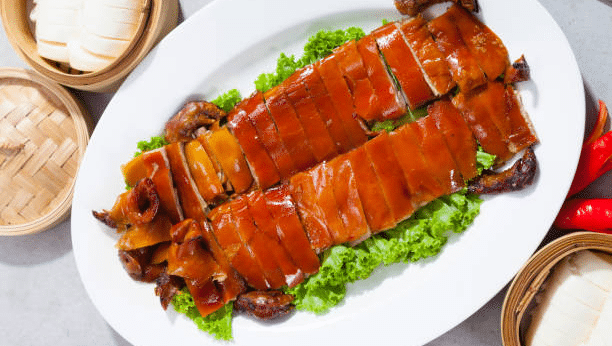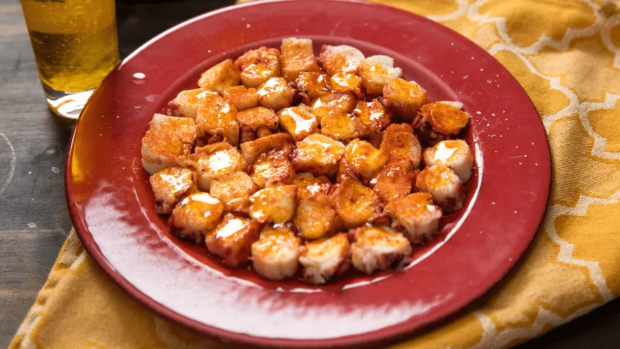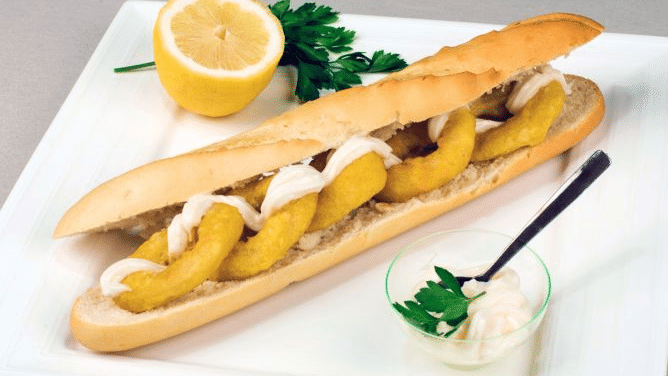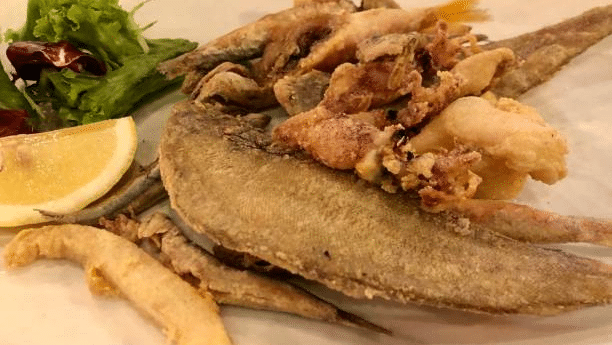Food adventures are part of every good vacation. Therefore, we have decided to present you with a list of the must-try Spanish cuisine in Madrid.
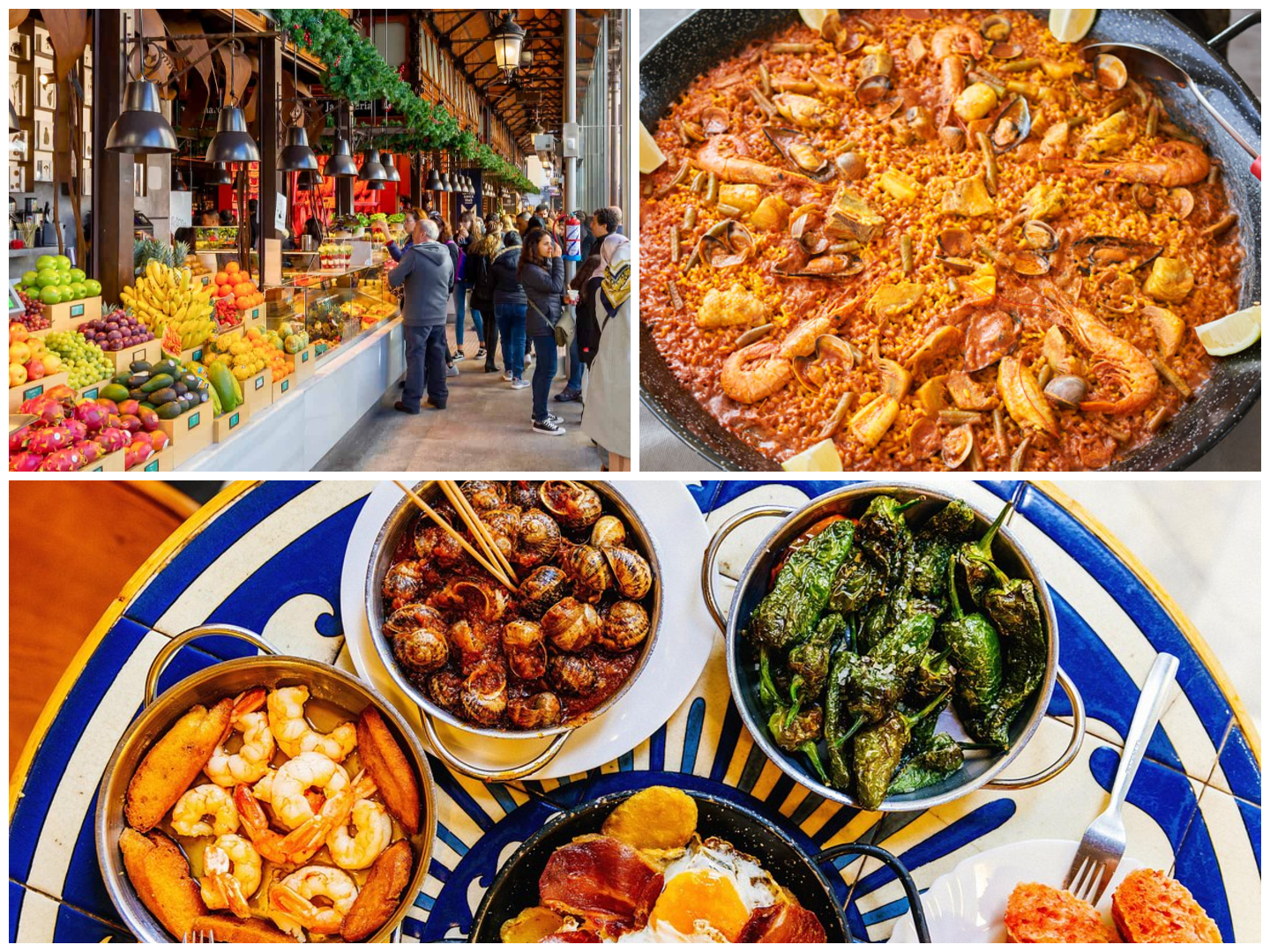
Introduction to Spanish Cuisine in Madrid
Madrid has its gastronomy, with typical recipes, including stew in three stages, tripe, snails, or tapas. More importantly, all autonomous communities have “gastro” delegations in the city. So it is not difficult to try the best Asturian beans, the best suckling piglet from Segovia, the best calçots from Catalonia, or the best Galician octopus. However, Madrid also allows you to devour culinary specialties from all over Spain. That’s why we have listed some of the typical dishes of Spanish gastronomy for you to try during your city break here.
When To Eat In Spain
It’s important to know what to eat in Madrid and when to eat in Madrid when eating in Spain. Spanish people eat and snack all day long.
Breakfast
Most locals in Madrid start the morning with a coffee and maybe a pastry or tostada con tomate. Then, around 11 a.m., they eat a snack, often a coffee, a small beer, or a glass of cava with a pastry or a small bocadillo.
Lunch
Lunch in Madrid typically comes late. Most restaurants don’t open until 1 p.m. at the earliest. Therefore, prime lunchtime is usually around 2 or 3 p.m. The afternoon snack, a merienda, is typically eaten around 6 p.m. to tie you over until dinner, which is not very late. It’s the biggest meal of the day and lasts a few hours, particularly on weekends.
Dinner
Dinner in Madrid, and through much of Spain, is much later than almost anywhere else in the world.
In addition, dinner can mean eating some of the top tapas, which are typical in Madrid. Either way, it is not served until 9 or 10 p.m. Restaurants won’t open until 8 p.m. or later, but some Madrid tapas bars will open earlier.
Our list of a Must try Spanish cuisine in Madrid
Paella
Typical of the Valencian Community, it is one of the icons of Spanish gastronomy. It is based on rice but has many variants:
- Seafood paella (with fish and seafood)
- Mixed paella (with meat and seafood)
- Mountain paella (with ribs, rabbit, and chicken)
Some celebrated chefs experiment with more exotic ingredients. Among those is Rodrigo de la Calle, who has dramatically succeeded with his oyster paella. You can try this contemporary version of this unique dish at the emblematic San Miguel Market alongside Plaza Mayor. If you prefer a more classic paella, go to La Paella de la Reina, alongside the la Gran Vía, or even better to La Barraca.
Roast Suckling Pig
Segovia and Arévalo boast the most renowned restaurants, but there are also establishments in Madrid where you can try this delicious hundred-year-old recipe. The roast is traditionally prepared in a ceramic pot in a wood-fired oven, and the suckling pig’s skin should be toasted and crunchy. More importantly, you can eat the best roast suckling pigs in Madrid at Coque, Botín, Casa Pedro, and Los Galayos. And lastly, it is worth mentioning that Castile and Leon are home to lambs and suckling pigs, one of the most typical dishes of Castilian cuisine, which are extremely popular all over Spain.
Cocido Madrileño
As the weather gets cold, the smell of this heated pork stew begins to float through the streets of Madrid. Consequently, Cocido madrileño is the definition of Spanish wintertime comfort food.
The most common take on this traditional Spanish stew is a flavorful broth of vegetables, chickpeas, chorizo sausage, and pork.
Ultimately, go to Taberna La Bola to eat delicious cocido. This family-run spot has been making cocido in the center of Madrid since 1870!
Carne de Toro de Lidia
A practice is less well-known than the actual sport of bullfighting. However, many restaurants in Madrid buy the fighting bull meat from the event and prepare it in their restaurants.
Why? The healthy lifestyle the fighting bulls provide for strength to fight translates to higher quality meat for consumption instead of animals raised to supply meat to the food industry.
Galician Octopus or Pulpo Gallego
It is a Galician-style octopus, a popular tapa (appetizer) served all over Spain today. It originated in the northwestern Spanish region of Galicia, where octopus (pulpo in Spanish) is a specialty and a common catch for local anglers.
All it needs is a dash of paprika, salt, and oil. In Madrid, there are also many Galician restaurants where you can eat it: La Gran Pulpería, O’Pulpo, Lúa (restaurant with one Michelin Star), Los Montes de Galicia, or Villa de Foz.
Iberian Ham and Cold Meats
Among the most popular foods in Spanish gastronomy are cold meats, which mainly come from pigs. Popular varieties include spicy chorizo sausage, which is well-cured and air-dried based on minced meat marinated with paprika and garlic. Black pudding, which does not contain meat and has many varieties, is characterized by pig’s blood seasoned with onion, garlic, and spices. Chistorra or longaniza, a typical product from Navarra prepared with freshly minced pork and fat, garlic, salt, paprika, and parsley, can be eaten fried or roasted. Pork loin or cured pork loin, which is eaten raw, in fine slices with a piece of bread, and pepperoni and fuet, both very similar to pork loin, are differentiated by their thickness, whereby fuet is the thinnest.
Jamón Iberico
A typical appetizer at Madrid’s restaurants, Jamón Iberico, is a traditional Spanish dish dating back. It gets its peculiar name from the Black Iberian pigs.
Iberian ham tastes smooth and savory; the meat comes from salting and drying the leg for weeks. You’ll know you’ve arrived at a traditional restaurant that serves Iberian ham when you see the ham legs still hanging from the wall.
Bocadillo de Calamares
No trip to Madrid is complete without tasting the city’s most famous sandwich: the bocadillo de calamares or fried squid sandwich.
The traditional bocadillo de calamares consists of fresh, crusty bread loaded with flour-coated, deep-fried squid rings and nothing else. Some Spaniards top the two-ingredient creation with tomato and paprika puree or homemade garlic mayonnaise. For the whole experience, wash your bocadillo with a cold caña of beer.
The many side streets around Madrid’s grand Plaza Mayor are home to some of the city’s best calamari sandwich bars. (Yes, you can find great food near tourist attractions!). Try it at La Campana, but be prepared for a line.
Fried Fish
Typical of Andalusia, fried fish is an absolute delight if well prepared. They usually serve it on a plate containing red snapper, sardines, anchovies, cuttlefish, etc. The secret lies in the product and, above all, the frying point. So, it is not easy to prepare. Fortunately, you can try it in Madrid, and you will end up licking your fingers because eating it with your fingers is better. Ultimately, we will send you a list of good restaurants. La Giralda, Bodega La Andaluza, Taberna del Puerto, or El Albero restaurant, located in Paracuellos del Jarama.
Gazpacho and Salmorejo
Two essential dishes in Spanish gastronomy are popular in summer as they are served chilled. The difference is that gazpacho is a cold soup of vegetables seasoned with oil and vinegar, whereas salmorejo is an emulsion. So, the first one has a fine texture, which you can drink from a glass or bowl. But the second one is thicker, like a cream, similar to mayonnaise. They make delicious gazpacho and salmorejo at La Cocina de San Antón. But we also recommend trying salmorejo, served with diced 100% Iberian ham, at Lambuzo and Espacio 33, which offers green gazpacho prepared with Mexican tomatoes.
Must try Spanish cuisine in Madrid – final thoughts
Are you already hungry?
Well, before you head to the kitchen or to the nearest restaurant, please write down your favorite Spanish dishes in the comments below. We’d love to read about your experiences.
Take a look at
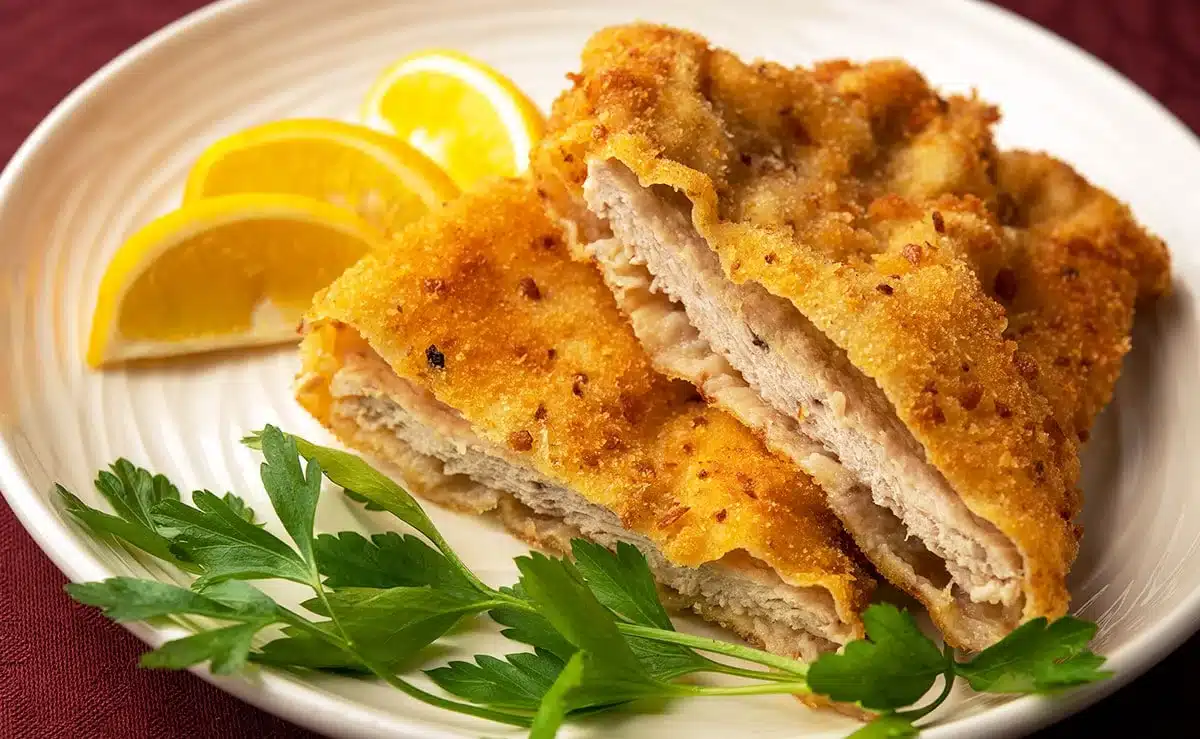
What to eat and drink in Vienna
Vienna, the heart of Austria, is globally known for its sweet treats and coffee. Exploring Viennese cuisine is essential for
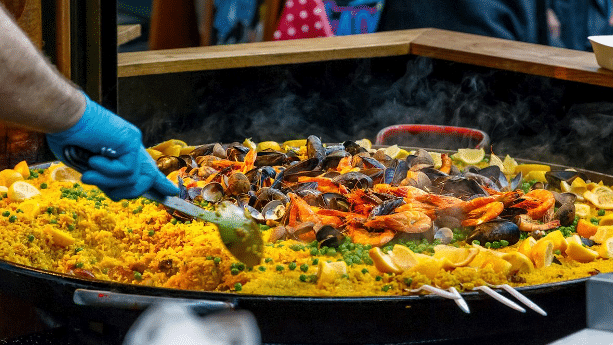
Top dishes you have to try in Barcelona
This article will present the Top dishes you have to try in Barcelona. Furthermore, according to the world food experts,

Charming Italian sayings about the food
It is impossible to think about Italy without thinking of delicious Italian food. The kitchen is central to the hearts

